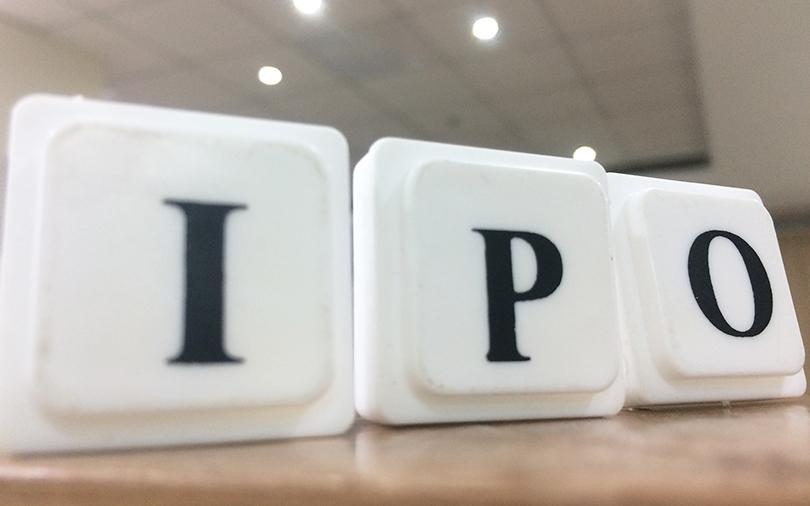Hindustan Aeronautics Ltd (HAL) has filed a draft proposal with the Securities and Exchange Board of India for an initial share sale, as the government finally decided to take the state-owned aerospace and defence firm public after moving back and forth on its plans for five years.
A plan to list HAL was originally approved in 2012 but the firm faced disclosure-related hurdles as it did not want to make key information public. The company, in conjunction with its merchant bankers, in 2013 sought an exemption from the capital markets regulator but did not get one.
The long-awaited IPO is now scheduled for calendar 2018. It comprises a sale of 36.15 million shares by the government. The sale will result in a 10% dilution in the government’s stake, which currently stands at 99.99%, according to the draft red herring prospectus (DRHP).
HAL will get three years from its listing date to meet SEBI norms of at least 25% public shareholding.
The issue size is estimated at Rs 1,500-2,000 crore ($225-300 million), two people privy to the development told VCCircle. A third person familiar with the development, however, pegged the issue size above Rs 2,000 crore, as India’s defence sector will see exponential growth under the government’s ‘Make in India’ initiative.
HAL, which makes military aircraft and helicopters, will become the first defence and aerospace sector manufacturer to list on the bourses. There are no listed companies that are direct competitors of HAL.
However, there are a clutch of defence companies such as Bharat Electronics Ltd, Reliance Naval (formerly Reliance Defence Engineering after acquiring Pipavav Defence), besides conglomerates such as Tata Group, Mahindra Group, Larsen & Toubro and Cyient that have defence and aerospace verticals.
Its global listed peers include Europe’s Airbus SE, and the US-based Boeing Co, Lockheed Martin, United Technologies and General Electric.
HAL’s IPO, among many other offerings of state-run companies, is part of the record disinvestment target for the current financial year to contain the fiscal deficit at 3.2% of gross domestic product.
Finance minister Arun Jaitley aims to raise Rs 72,500 crore through capital receipts comprising minority sales, strategic disinvestments and listing of state-owned insurance companies such as General Insurance Corp and National India Assurance.
The government has also pitched for listing the shares of railway companies such as the Indian Railway Catering and Tourism Corporation, Indian Railway Finance Corporation and Ircon International.
Here’s a snapshot of proposed IPO by HAL.
Issue:
The IPO is entirely an offer for sale by the government as part of its disinvestment plan. The Centre will sell 36.15 million shares, representing a 10% stake on post-issue basis, according to the DRHP.
The IPO size is estimated at as much as Rs 2,000 crore.
Use of proceeds:
The company will not receive any proceeds from the issue. The IPO proceeds will go into the government’s treasury.
Bankers:
SBI Capital Markets and Axis Capital are the merchant bankers managing HAL’s IPO. It dropped Goldman Sachs and Barclays Securities (India) from the IPO plans.
Lawyers:
Khaitan & Co is the India legal counsel and Baker & McKenzie. Wong & Leow are international counsel representing HAL in the IPO process.
Cyril Amarchand Mangaldas is the legal counsel representing the merchant bankers.
Company:
Bangalore-based HAL was incorporated in 1963. It designs, develops, manufactures, repairs, overhauls and services a wide range of products including aircraft, helicopters, aero-engines, avionics, accessories and aerospace structures.
It is India’s largest state-run company in the defence sector by production value, as per the Ministry of Defence’s annual report for 2016-17. It is a so-called Navratna, a status the government has granted a few state-run companies denoting greater operational and financial autonomy.
HAL ranks 39th in the global list of aerospace companies based on annual revenue (in dollar terms), as per a 2016 report by Flight International, an aerospace and aviation sector data and analytics firm.
The company’s operations are segregated through five complexes, which together include 20 production divisions and 11 research and design centres across India, as per its DRHP.
Its core business practice is own research as well as technology transfer and licence agreements to manufacture aerospace products. The company also has 13 commercial joint ventures to grow its operations.
As on 31 July 2017, its order book value stood at Rs 63,333 crore (nearly $10 billion) through a combination of products and services to be manufactured and delivered but excluding anticipated revenues from JVs and subsidiaries.
HAL is pursuing the design, development and production of the Light Combat Helicopter, Light Utility Helicopter, the Intermediate Jet Trainer, the HTT-40 basic trainer aircraft and a mini unmanned aerial vehicle.
It is also pursuing additional opportunities in the military business through co-development programmes such as the fifth-generation fighter aircraft, besides research, design and development of the Hindustan Turbo Fan Engine-25 and Hindustan Turbo Shaft Engine-1200 aircraft and helicopter engines.
The company aims to diversify its growth by expanding export sales of aerospace and defence products as well as aero-structures, avionics, spares and services in international markets.
“Although we continue to focus on expanding sales of our products globally, we are especially committed to applying and receiving regulatory approvals for our products to be sold in Latin America and Southeast Asia, which we believe are high growth markets for our products,†the company said in its DRHP.
Financials:
The company reported consolidated net profit of Rs 2,624.7 crore for the fiscal year ended March 2017. Its net profit stood at Rs 2,004.3 crore and Rs 994.1 crore for 2015-16 and 2014-15, respectively.
Its revenue (from operations net of excise duty) has grown at a compound annual rate of 7.11% from Rs 15,47.5 crore in 2014-15 to Rs 17,951.5 crore last fiscal year.
Its sales to the Indian defence sector accounted for 93.3% of its total sales last fiscal year. In addition, it earned revenue from sales of products and services to state governments, paramilitary forces and corporate houses, besides exporting to customers in 13 countries.
During 2015-16 and 2016-17, exports accounted for 2.7% and 2.6% of its revenue from operations, respectively.






